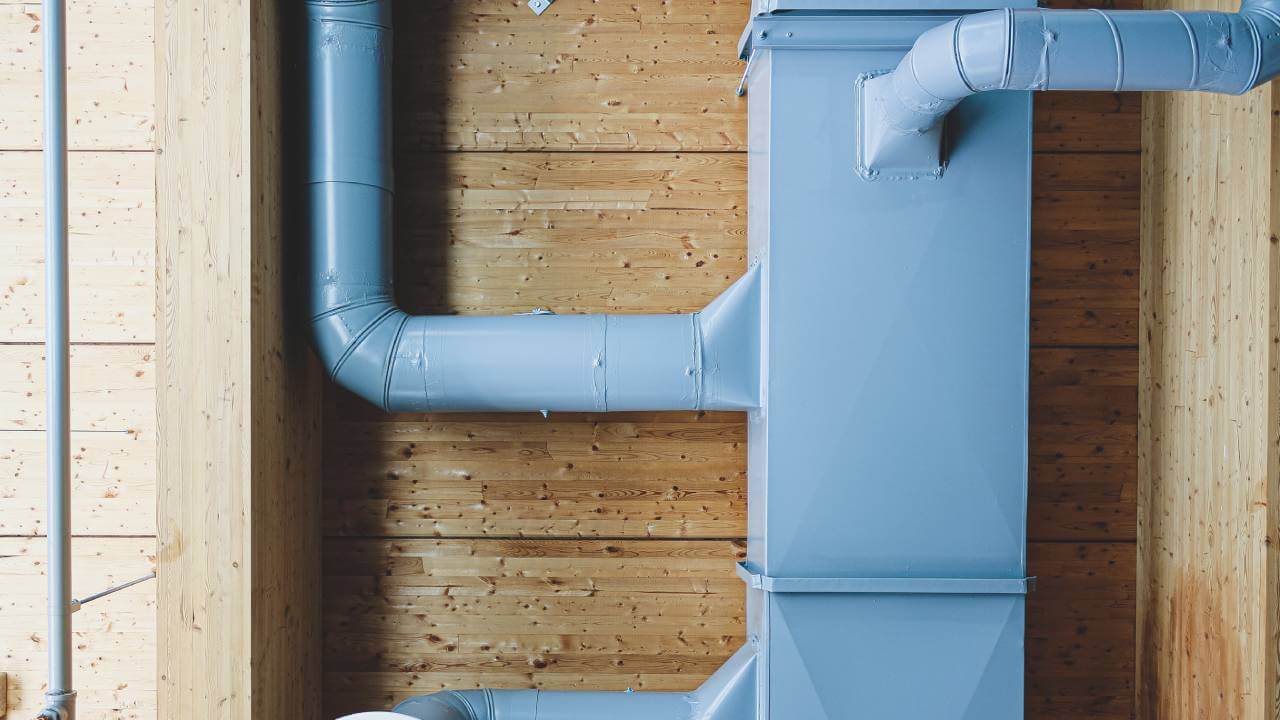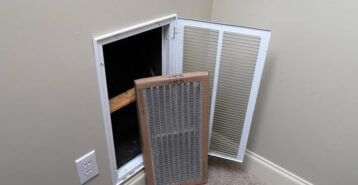How to Size Ductwork
HVAC systems work a lot more efficiently when the ductwork you use is the right size for your home. Install duct sizes that are too small, and your system will have to work harder to keep your home heated and cooled. If your duct sizing is too big, the velocity will be compromised, meaning you may not be able to feel it through the air vents.
Ductwork sizing relies on a complicated formula that includes your home square footage measurements, the size of your unit, the necessary air flow velocity, and the friction loss and static pressure of your HVAC system. That’s why HVAC professionals have charts and tools at their disposal to make the whole process go smoother.
What you will need to know to calculate ductwork sizing for your home:
- Square footage of your home.
- Square footage of each individual room in your home.
- Cubic feet per minute calculations (explained below.)
- Duct Size Friction Loss Rate
Sizing duct work on your own can be a tedious and complicated task. Sometimes it’s best to leave it to an HVAC professional to get the perfect HVAC duct work size for your home.

Sizing Your Home’s Square Footage
The size of your home informs the size of your heating and cooling units—but it will also determine how large your duct sizes need to be. To accurately gauge the size of your ductwork, you will need to precisely measure the square footage of not just your house as a whole, but the size of each room, as well.
Run a tape measure around the length and width of each wall, dividing odd-shaped rooms into separate rectangular parts to calculate your measurements, if necessary. Write each measurement down on a chart to keep track of them, because you will need them later!
Cubic Feet Per Minute Size Calculations
Next, we need to talk about the cubic feet per minute, or CFM. This measurement indicates the air velocity or flow needed to accurately heat or cool a room. Since the size of your ductwork can increase or lower this measurement, you’ll have to find the necessary CFM for each room before you can get the right duct size for each space.
- Cubic Feet Per Minute = (HVAC Unit Tons x 400) / total square footage of home.
- Calculate for each individual room.
To calculate CFM, you need to know the size of your heating or cooling unit in tons. Multiply this number by 400, which is the average output of an HVAC unit. Then divide by the total square footage of your home. This will give you the multiplier for all your rooms’ CFM. So if you’re starting in the kitchen, and the kitchen is 300 square feet, to find the room’s CFM, you’d multiply 300 by (unit size x 400) / total square footage of your home. Do this for each room in your house.
Duct Size Friction Loss Rate
Another important unit to know is the friction loss rate of your ducts. This helps your contractor determine the static pressure for your unit throughout the length of your ducts—another size measurement that affects the overall air flow from your system.
Friction loss rate depends on many different duct size measurements, like the length of each duct; the amount of coils, filters, grills, registers, and dampers in your system; and the amount of turns in the ductwork. Your contractor will use a duct size calculator to combine these measurements and features into your system’s static pressure measurement. Then they multiply it by 100 and divide by the total length of your system’s ductwork.
However, this is obviously a very complicated measurement—and becomes all the more complicated depending upon the size and shape of your ducts. For this reason, it is usually best to leave friction loss rate calculations up to a professional contractor. But you can find a general number using an online friction loss calculator.
Using an HVAC Duct Sizing Calculator
Your overall ducting size comes from combining the size, CFM, and friction loss of your home—meaning it ends up being a pretty complicated calculation. Because of this, HVAC professionals and amateurs alike typically don’t calculate the final HVAC ducting size by themselves. Instead, they use software or programmed calculators that can make these final deductions for them.
Because an HVAC professional has access to more sophisticated tools, it’s a safe bet that their calculations will be a little bit more precise than a home handyman’s.
Still, you should always at least consult with a knowledgeable professional when you’re designing an HVAC duct system. The size of your ductwork can massively alter the comfort of your home—and the amount you spend every month to keep your house heated or cooled. HVAC units represent the largest portion of your home’s energy use, so getting those numbers right is imperative in order to save the most money on utility bills.
Compare top-rated HVAC pros in your area.
Read real homeowner reviews, explore qualifications, and view promotions. Modernize makes it easy to browse professionals and find one that will be perfect for your project.









